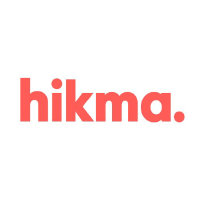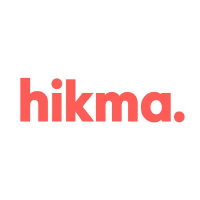
Hikma Pharmaceuticals PLC
LSE:HIK


| US |

|
Johnson & Johnson
NYSE:JNJ
|
Pharmaceuticals
|
| US |

|
Berkshire Hathaway Inc
NYSE:BRK.A
|
Financial Services
|
| US |

|
Bank of America Corp
NYSE:BAC
|
Banking
|
| US |

|
Mastercard Inc
NYSE:MA
|
Technology
|
| US |

|
UnitedHealth Group Inc
NYSE:UNH
|
Health Care
|
| US |

|
Exxon Mobil Corp
NYSE:XOM
|
Energy
|
| US |

|
Pfizer Inc
NYSE:PFE
|
Pharmaceuticals
|
| US |

|
Palantir Technologies Inc
NYSE:PLTR
|
Technology
|
| US |

|
Nike Inc
NYSE:NKE
|
Textiles, Apparel & Luxury Goods
|
| US |

|
Visa Inc
NYSE:V
|
Technology
|
| CN |

|
Alibaba Group Holding Ltd
NYSE:BABA
|
Retail
|
| US |

|
3M Co
NYSE:MMM
|
Industrial Conglomerates
|
| US |

|
JPMorgan Chase & Co
NYSE:JPM
|
Banking
|
| US |

|
Coca-Cola Co
NYSE:KO
|
Beverages
|
| US |

|
Walmart Inc
NYSE:WMT
|
Retail
|
| US |

|
Verizon Communications Inc
NYSE:VZ
|
Telecommunication
|
Utilize notes to systematically review your investment decisions. By reflecting on past outcomes, you can discern effective strategies and identify those that underperformed. This continuous feedback loop enables you to adapt and refine your approach, optimizing for future success.
Each note serves as a learning point, offering insights into your decision-making processes. Over time, you'll accumulate a personalized database of knowledge, enhancing your ability to make informed decisions quickly and effectively.
With a comprehensive record of your investment history at your fingertips, you can compare current opportunities against past experiences. This not only bolsters your confidence but also ensures that each decision is grounded in a well-documented rationale.
Do you really want to delete this note?
This action cannot be undone.

| 52 Week Range |
1 767.5
2 083
|
| Price Target |
|
We'll email you a reminder when the closing price reaches GBX.
Choose the stock you wish to monitor with a price alert.

|
Johnson & Johnson
NYSE:JNJ
|
US |

|
Berkshire Hathaway Inc
NYSE:BRK.A
|
US |

|
Bank of America Corp
NYSE:BAC
|
US |

|
Mastercard Inc
NYSE:MA
|
US |

|
UnitedHealth Group Inc
NYSE:UNH
|
US |

|
Exxon Mobil Corp
NYSE:XOM
|
US |

|
Pfizer Inc
NYSE:PFE
|
US |

|
Palantir Technologies Inc
NYSE:PLTR
|
US |

|
Nike Inc
NYSE:NKE
|
US |

|
Visa Inc
NYSE:V
|
US |

|
Alibaba Group Holding Ltd
NYSE:BABA
|
CN |

|
3M Co
NYSE:MMM
|
US |

|
JPMorgan Chase & Co
NYSE:JPM
|
US |

|
Coca-Cola Co
NYSE:KO
|
US |

|
Walmart Inc
NYSE:WMT
|
US |

|
Verizon Communications Inc
NYSE:VZ
|
US |
This alert will be permanently deleted.
 Hikma Pharmaceuticals PLC
Hikma Pharmaceuticals PLC
Hikma Pharmaceuticals PLC
Investor Relations
Hikma Pharmaceuticals PLC, a Jordanian-British multinational, began its journey in the heart of Amman, Jordan, in 1978, founded by Samih Darwazah. Over the years, it has evolved from a local pharmaceutical manufacturer into a global powerhouse, recognized as a key player in the generic pharmaceutical industry. The company's core strategy revolves around the production and distribution of a wide array of generic medications, serving diverse therapeutic categories such as cardiovascular, oncology, and infectious diseases. Hikma's competitive edge lies in its ability to produce high-quality and cost-effective medicines, which are crucial in both high-demand regions and emerging markets where affordable healthcare options are often limited. By leveraging its robust manufacturing capabilities and regulatory expertise, Hikma efficiently supplies generic and branded medications to over 50 countries worldwide, nurturing its growth and bolstering its market position.
Driving the gears of Hikma's revenue machine are its three main operational segments: Injectables, Generics, and Branded pharmaceuticals. The Injectables division, a significant contributor to its financial health, supplies hospitals with critical sterile products, benefiting especially when acute care needs surge. Meanwhile, the Generics division continues to expand its footprint in the U.S. market, offering cost-effective alternatives to brand-name drugs, riding the wave of patent expirations. The Branded segment, deeply rooted in the Middle East and North Africa, capitalizes on Hikma's regional expertise and trusted brand reputation. Through this diversified business model, Hikma not only fortifies its financial stability but also ensures resilience against market fluctuations, steering the firm towards sustainable growth amidst an ever-evolving global pharmaceutical landscape.

Hikma Pharmaceuticals PLC, a Jordanian-British multinational, began its journey in the heart of Amman, Jordan, in 1978, founded by Samih Darwazah. Over the years, it has evolved from a local pharmaceutical manufacturer into a global powerhouse, recognized as a key player in the generic pharmaceutical industry. The company's core strategy revolves around the production and distribution of a wide array of generic medications, serving diverse therapeutic categories such as cardiovascular, oncology, and infectious diseases. Hikma's competitive edge lies in its ability to produce high-quality and cost-effective medicines, which are crucial in both high-demand regions and emerging markets where affordable healthcare options are often limited. By leveraging its robust manufacturing capabilities and regulatory expertise, Hikma efficiently supplies generic and branded medications to over 50 countries worldwide, nurturing its growth and bolstering its market position.
Driving the gears of Hikma's revenue machine are its three main operational segments: Injectables, Generics, and Branded pharmaceuticals. The Injectables division, a significant contributor to its financial health, supplies hospitals with critical sterile products, benefiting especially when acute care needs surge. Meanwhile, the Generics division continues to expand its footprint in the U.S. market, offering cost-effective alternatives to brand-name drugs, riding the wave of patent expirations. The Branded segment, deeply rooted in the Middle East and North Africa, capitalizes on Hikma's regional expertise and trusted brand reputation. Through this diversified business model, Hikma not only fortifies its financial stability but also ensures resilience against market fluctuations, steering the firm towards sustainable growth amidst an ever-evolving global pharmaceutical landscape.





























 You don't have any saved screeners yet
You don't have any saved screeners yet
